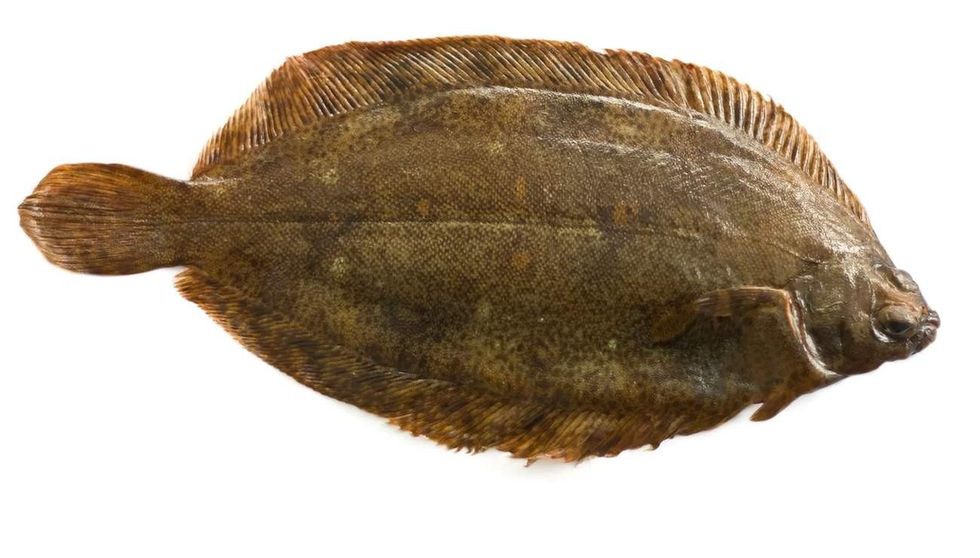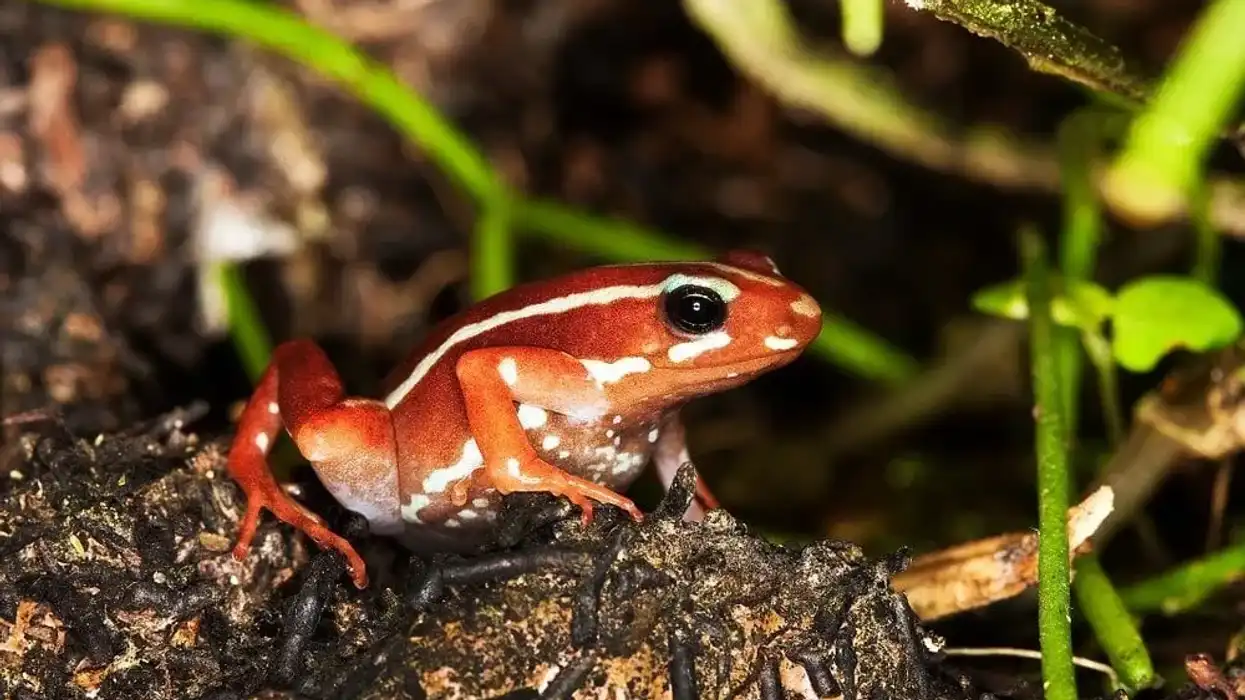The witch flounder is a species of flatfish found on the western and eastern sides of the North Atlantic Ocean and the cold water regions around Northern Europe.
Belonging to the flounder family Pleuronectidae, the witch flounder is a bottom-dwelling species, mostly found in deep waters or muddy sea beds where the temperatures are usually in the 35-42 F (2-6 C) range.
Spawning of the fish also takes place in cold waters.
These flatfishes have quite a unique appearance - the body is oval in shape and dorsally compressed with both eyes on the upper side. They have a small mouth, small head, and prominent eyes.
The body is covered with smooth scales. The two sides of the flounder's body have contrasting coloration - while the upper side (eyed side) is brownish-gray, the bottom (blindside) is paler, usually grayish-white.
Apart from witch flounder, gray sole is another popularly used name for these flatfishes, perhaps due to their color and resemblance to a sole or sandal.
The witch flounder has great commercial significance and is popular among fisheries that consider the witch to be an important bycatch. In fact, the witch's meat is quite a delicacy, having high-quality texture and flavor.
There's more to these flatfishes with oddly-placed eyes. So, read on to know more!
If you like what you read, do check out flounder and common carp facts to know more about fishes.
Witch Flounder Interesting Facts
What type of animal is a witch flounder?
The witch flounder (Glyptocephalus cynoglossus), or gray sole, is a fish species belonging to the flatfish family Pleuronectidae.
What class of animal does a witch flounder belong to?
The witch flounder belongs to the class Actinopterygii.
How many witch flounders are there in the world?
A global population estimate of the witch flounder is not available.
Where does a witch flounder live?
The witch flounder is a deep-water fish species that prefer sandy, muddy, or clayey sea beds. The fish is also found in deep channels and holes on the continental shelf and upper continental slope.
What is a witch flounder's habitat?
The witch flounder is abundant on either side of the North Atlantic Ocean. Its range in the western Atlantic stretches from Newfoundland and Labrador southwards up to North Carolina.
In Canada, the fish species are found in the Scotian Shelf, the Grand Banks, the Gulf of St. Lawrence, and the Gulf of Maine. The European range of the fish species stretches from the coasts of northern Norway and Iceland southwards to the western coast of France.
A benthic species, the gray sole fish, is found in fairly deep waters, with a depth range of 164-5,250 ft (50-1,600 m). Moreover, the fish prefers muddy, sandy, or clayey substrates.
Who do witch flounders live with?
No information is available on whether the witch flounder species lives alone or in groups.
How long does a witch flounder live?
The witch flounder fish species can live up to 14 years, with the maximum reported age being 25 years.
How do they reproduce?
The spawning season of the witch flounder extends from May to September, with maximum spawning taking place during the summer months. However, witch flounders inhabiting the southern limits of their habitat range spawn earlier than their northern counterparts.
The fish typically spawns in waters that could be near freezing or have a temperature in the range of 8.8-10 degrees Celsius.
The number of eggs laid depends on a female witch flounder's size; the larger the fish, the more the eggs. A fish of about 23.6 in (60 cm) has been reported to lay 500,000 eggs, while a smaller female of about 12.2 in (31 cm) bore 48,800 eggs.
Witch flounders spawn near the bottom of the ocean, but the fertilized eggs float and undergo development higher in the water column. The larvae take about a week to hatch.
The newly-hatched larvae have one eye on either side of the head, but as the fish develops, the left eye migrates to the right side of the head. Once this metamorphosis is complete, the juvenile fish adopt a benthic habitat and settle on the ocean bottom.
What is their conservation status?
According to the International Union for Conservation of Nature (IUCN) Red List of Threatened Species, the witch flounder is a species of Least Concern.
Witch Flounder Fun Facts
What do witch flounders look like?

The witch flounders are right-eyed flatfishes with a small head and a small mouth. The mouth has a series of incisor-like small teeth. Both eyes are present on the dorsal (upper) side of the head.
The lower side of the head, known as the blind side, has blister-like pits that appear as tiny black dots. The fish is oval in shape and dorsally compressed.
A straight lateral line runs through the length of the body. Almost the entire body and head are covered in smooth scales. The scales are brownish-gray on the eyed side with paler, grayish, or whitish blind side.
The fins of the witch flounder have rays. The anal fin has 85-102 rays, and the dorsal fin has around 95-120 rays.
The pectoral fin has blackish tips. Moreover, the pectoral fin on the upper side is shorter than the head. The body and fins have dense, minute black spots, with the median fins (caudal, dorsal, and anal fins) having dusky margins.
How cute are they?
Witch flounders are not conventionally cute. Rather, their oddly-placed eyes and flattened, oval bodies give them a distinctive look.
How do they communicate?
The lateral line that runs the length of the witch flounder's body is a sense organ for detecting movements and vibrations in the water. Besides, the eyes on top of the head serve as visual organs. Flounders are known to camouflage and protect themselves from predators by lying on the ocean floor.
How big is a witch flounder?
Witch flounders can have a length in the range of 11.9-23.6 in (30-60 cm). In terms of witch flounder vs. smooth flounder (Pleuronectes putnami) size, the latter grows to a length that is about half of that of the former.
How fast can a witch flounder swim?
The swimming speed estimate of the witch flounder is not available. However, the Japanese flounder (Paralichthys olivaceus) is reported to have a swimming speed of 0.4-0.5 mph (0.7-0.8 kph).
How much does a witch flounder weigh?
Witch flounders can grow to about 8.8 lb (4 kg).
What are the male and female names of the species?
Male and female flounders do not have distinct names.
What would you call a baby witch flounder?
Baby witch flounders would be called larvae or juvenile fish.
What do they eat?
The witch flounder feeds on aquatic invertebrates such as worms, small mollusks, starfish, and small crustaceans.
Are they dangerous?
The witch flounder is not known to be dangerous. It is a rather popular bycatch species among fisheries. Furthermore, the witch flounder taste has a sweetish undertone that makes it a delicacy in many parts of the world.
Would they make a good pet?
The witch flounder is not suited as a pet because its predatory nature may pose a threat to other smaller fish and aquatic organisms in the aquarium. Besides, this fish is accustomed to fairly deep waters and may not be suitable for artificial enclosures.
Did you know...
Commercial fisheries in North America procure about 2,700 tons (2450 tonnes) of the witch flounder annually. The fish is caught using techniques such as small flatfish bottom trawling and demersal bottom trawling.
Naming the witch flounder
The witch flounder is also known by other names such as Craig fluke, pole flounder, Torbay sole, or simply the witch.
Where do witch flounders come from?
The witch flounder is abundant in the North Atlantic. In the western Atlantic, its range stretches from Newfoundland and Labrador up to North Carolina in the south.
In Canada, the fish species are found in the Scotian Shelf, the Grand Banks, the Gulf of St. Lawrence, and the Gulf of Maine. The European range of the fish species stretches from the coasts of northern Norway and Iceland and further south to the western coast of France.
Here at Kidadl, we have carefully created lots of interesting family-friendly animal facts for everyone to discover! For more relatable content, check out these gulf flounder facts and barb facts for kids.
You can even occupy yourself at home by coloring in one of our free printable witch flounder coloring pages.
Second image by Brocken Inaglory.
*We've been unable to source an image of a witch flounder and have used an image of a starry flounder instead as the main image. If you are able to provide us with a royalty-free image of a witch flounder, we would be happy to credit you. Please contact us at hello@kidadl.com.










